How to choose the best walking shoes and avoid bad shoe purchases
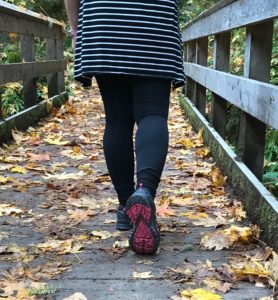 It’s not easy, finding the best walking shoes for your particular feet. And I hate wasting money on shoes that don’t quite fit. (I wish I had a dollar for every pair I’ve purchased that are a little too snug!)
It’s not easy, finding the best walking shoes for your particular feet. And I hate wasting money on shoes that don’t quite fit. (I wish I had a dollar for every pair I’ve purchased that are a little too snug!)
My challenge is finding a shoe with enough room in the toe box, without going to the overall high-volume shoes that many of you need. (I have a standard, D-width foot, with E-width toes!)
Many people have fallen arches, bunions or heel pain to consider.
So price, comfort, fit, support, and the quality of construction are all important considerations.
Here are some tips that should make your shoe shopping a lot easier.
Make sure you know the specs of your feet.
Everyone knows their shoe size. Roughly. But most of us have feet that are not exactly the same size. Not only that, our feet can also change and grow as we get older. So if you want to choose the best walking shoes, precise sizing is the place to start.
Get both of your feet measured for length and width. Some stores now have machines that scan your foot, so you not only get the size measurements you also get a footprint that displays your arch profile, instep, and overall volume of your feet.
 You can do the same thing at home… Just step out of the shower onto two pieces of paper. Your wet feet will leave a clear footprint that looks like one of these:
You can do the same thing at home… Just step out of the shower onto two pieces of paper. Your wet feet will leave a clear footprint that looks like one of these:
Make sure that the footbed in your shoes match the arch profile of your feet. If you have flat feet and you get a shoe that happens to have a really substantial arch support, you’re going to be very uncomfortable.
On the other hand, if you have high arches, and you wear minimalistic shoes that have no arch support, your feet will start to hurt eventually. It’s only a matter of time.
Always buy shoes that will accommodate your largest foot.
You don’t want to have your toes on your longer foot jamming up against the front of the shoe when you’re walking down a hill. So allow some space for your longer foot. (My left foot is a half-size longer than my right.) You can adjust your other shoe to the smaller foot with some creative lacing or a thicker sock.
Be specific about the purpose of your new pair of shoes.

Many retail salespeople will push you into running shoes, saying “you can walk in a running shoe, but you can’t run in a walking shoe.”
That’s really bad advice.
If you’re a runner, buy running shoes. But if you love to walk, and it’s one of your main forms of fitness, you need WALKING shoes. Not running shoes or sneakers or “training” shoes.
The anatomy of a walking stride is completely different than the anatomy of a running stride. Therefore, the anatomy of the shoes also needs to be distinctly different.
For running shoes it’s all about light weight and propulsion. For Walking shoes it’s stability and support. You need to sacrifice weight for sturdiness.
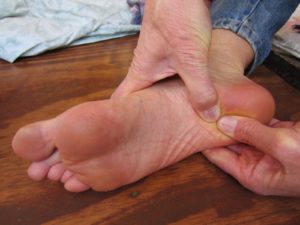
This is especially true for anyone who has had heel pain, plantar fasciitis, or any other foot problem.
If you’re walking a lot in a flimsy pair of sneakers, you’re setting yourself up for an injury that could sideline you for months. So look the the following categories of shoes, and choose the one that’s appropriate for your particular need…
Buying shoes online is the best way to find the perfect fit.
I have to admit, I was skeptical at first. But buying shoes from Amazon beats the heck out of driving from one store to another, only to to get skunked on sizes and styles.
There are only a few shops in my town that carry shoes designed specifically for walking. There are a lot of hiking boots, and tons of running shoes, but very few walking shoes. So even if I drove to every single store I was often left with only a few lousy choices.
With Amazon, there are hundreds of choices. We recommend that you order at least two different shoes, in two different sizes each. Then put them on and wear them around the house for at least a half an hour. Take your time. Walk around in them. Go up and down the stairs and make sure they don’t slip, pinch or grab. That’s the best way to decide.
Then just send back the pairs that aren’t your top choice. Returns are easy, especially if you have Amazon Prime.
We’ve categorized all walking shoes into the following 5 groups:
1. Sandals for Walking
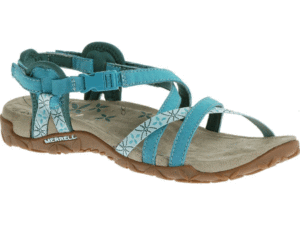
Hot summer days and vacation travel sometimes demand sandals that you can also walk in. Technically, these are not walking shoes, but the sandals we’ve chosen are widely regarded as the best for walking.
2. Sneakers for Walking
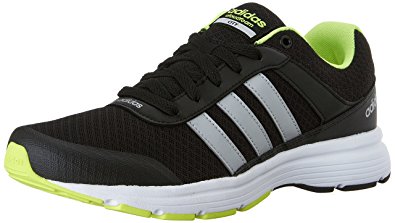 These are the lightest and least supportive of all the shoes we’ve researched. Generally speaking, we don’t recommend plain old sneakers for walking, but we also know the realities of the marketplace… Many people just make do with sneakers, so we include some of the better ones in our walking shoe buyer’s guide.
These are the lightest and least supportive of all the shoes we’ve researched. Generally speaking, we don’t recommend plain old sneakers for walking, but we also know the realities of the marketplace… Many people just make do with sneakers, so we include some of the better ones in our walking shoe buyer’s guide.
3. Trail Running Shoes For Walking
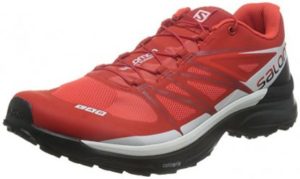 If you shop at most chains or discount shoe stores you won’t find walking shoes. Instead, the sales people will push you into a running shoe, saying that they’re essentially the same.
If you shop at most chains or discount shoe stores you won’t find walking shoes. Instead, the sales people will push you into a running shoe, saying that they’re essentially the same.
Ha! Don’t fall for it. Running and walking demand completely different things from a shoe, so the only running shoes that we normally recommend for walking can be found in the trail running category. Trail Running Shoes are substantially sturdier and more rigid than most lightweight running shoes. Therefore, they can work well as walking shoes for some people. If you try walking in lightweight running shoes, you’re just asking for foot problems.
4. Supportive, Orthopedic Shoes For Walking
 There are a few brands, such as Vivonic, Kuru, Brooks, Birkenstock and Aetrex that are anatomically designed to provide extra support for problem feet. You won’t find these brands on the shelf at a standard, run-of-the-mall shoe store. So if you have heel spurs, plantar fasciitis or diabetes-related foot issues, this is the category for you.
There are a few brands, such as Vivonic, Kuru, Brooks, Birkenstock and Aetrex that are anatomically designed to provide extra support for problem feet. You won’t find these brands on the shelf at a standard, run-of-the-mall shoe store. So if you have heel spurs, plantar fasciitis or diabetes-related foot issues, this is the category for you.
5. Light Hiking Shoes For Walking
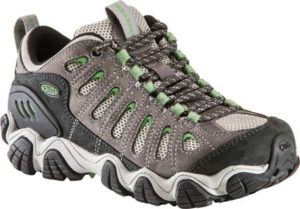 These are the most durable, most substantial shoes of the bunch. We don’t review hiking boots but some of these models would work perfectly well for short back packing trips or long day hikes. Take a look at Oboz, Solomon, Keen and Merrell.
These are the most durable, most substantial shoes of the bunch. We don’t review hiking boots but some of these models would work perfectly well for short back packing trips or long day hikes. Take a look at Oboz, Solomon, Keen and Merrell.

Shopping online is best, but if you’re going to shop in retail stores, do it alone.
It can take a good hour to dial-in the fit, and if you have people waiting for you, chances are you’ll rush the process and end up with a less than perfect fit. Then you have to drive back to the store and start over again.
Been there, done that. Too many times. It’s much easier to just order several pairs from Amazon, wear them around the house until I’m sure about my favorite, then return all the rest.
Tips for choosing a walking shoe:
- Walking shoes should be a balance between weight and support. You don’t need a super-lightweight shoe, like you would for competitive running. They should also be adapted to the type of walking you do. If you’re a mall walker your shoes will look different than if you do mostly trail walking.
- Pick up a shoe by the heel and toe and bend the toe upward. The sole of the shoe should be rigid, and bend only at the ball of the foot. If the entire sole bends, it’s not a very supportive shoe. It should bend under the ball of the foot and not along the entire foot. This is one reason why you should never buy walking shoes that are a size too big… the break in the toe area won’t match up with the anatomy of your feet
- Pick up the shoe in both hands and twist from the heel to the toe. Does the sole feel like a wet noodle or is there resistance to twisting? The sole of a good walking shoe will not twist. It’s a solid, rigid platform beneath your feet.
You get what you pay for in a walking shoe.
If you opt for the cheapest shoes you can find, your feet will pay the price. In fact, any money you save on shoes might just end up going to a podiatrist when your feet start hurting.
The whole idea of walking is to stay mobile and get fit. You can’t do that if your feet are hurting you all the time. Instead of making do with a cheap pair of sneakers, invest in a a good, sturdy pair of walking shoes. It’s the wise choice in the long run.
